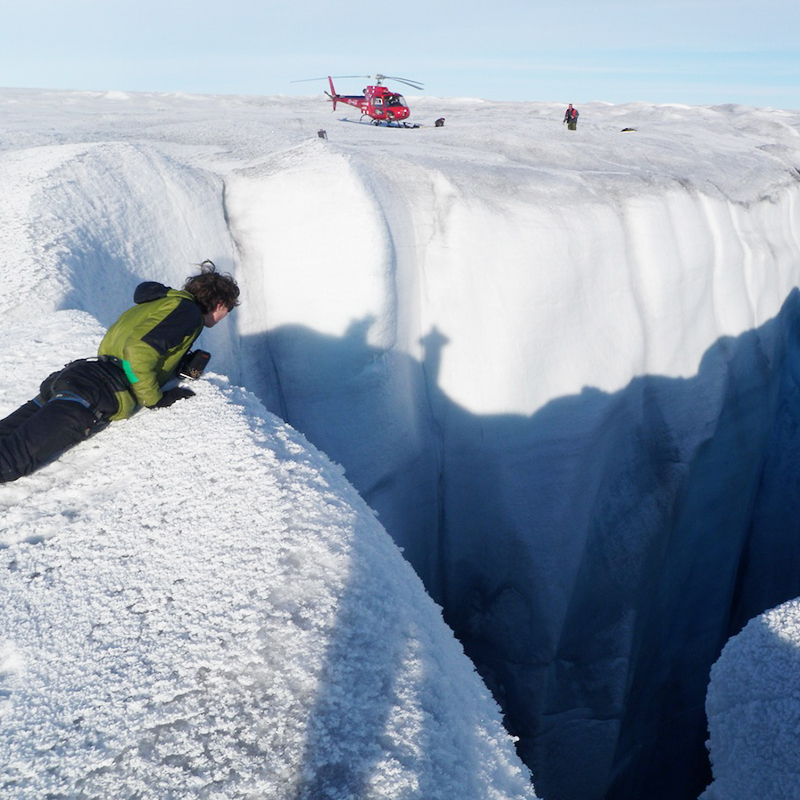Over the last million years, Sweden, Finland and Canada have experienced multiple ice ages, with one occurring on average every 100,000 years. That is why it is imperative to understand the conditions at the surface and below an ice sheet when planning for the safe, long-term management of used nuclear fuel in a deep geological repository.
Together with partner organizations SKB (Sweden) and Posiva (Finland), the Nuclear Waste Management Organization (NWMO) has released the positive findings of the Greenland Analogue Project (GAP), a collaborative research project that ran from 2008 to 2013. This project brought together specialists, research scientists, and engineers from six countries, and focused on increasing scientific understanding of how an ice sheet interacts with areas both above and below ground. This understanding will be used in safety cases – the comprehensive, detailed studies used to evaluate the safety of deep geological repositories over time frames of up to one million years.
This research was conducted on part of the Greenland Ice Sheet. The Greenland Ice Sheet is the second largest ice sheet in the world, and is comparable to the ice sheets predicted to extend over both Scandinavia and Canada in the future.
“The results from the GAP provide information on where and how much meltwater is generated, both on the surface of the ice sheet and at the base of the ice sheet where it contacts the rock below, and on how water travels from the surface through the ice to the base of the ice sheet, as well as never-before-seen information on the water pressure at the base of an ice sheet,” explained Monique Hobbs, geoscientist and Siting Project Co-Ordination Manager at the NWMO.
Researchers and specialists drilled boreholes through the ice to the point of contact between the ice sheet and underlying rock to measure the water pressure the ice sheet exerts underground. Additionally, a deep bedrock borehole was drilled at the edge of the ice sheet at a depth that approximates repository conditions so hydraulic and chemical monitoring could be performed.
“The boreholes and results from modelling studies confirmed that water pressure corresponding to 92 per cent of ice thickness accurately describes the average water pressure under the entire Greenland Ice Sheet over the year,” said Lillemor Claesson Liljedahl, geoscientist and GAP Manager for SKB. “This new information indicates that the conditions under an ice sheet assumed in both earlier and ongoing safety assessments were realistic.”
A technical expert with Posiva, Anne Kontula, Research Manager and Deputy Project Manager for GAP, echoed excitement at these positive findings, saying that “For our industry, safety is always our top priority. Having a greater understanding of the pressure and movement of water at depths associated with deep geological repositories will help further international understanding and best practices associated with the management of used nuclear fuel.”
Over the five years of the study, researchers made direct and indirect observations about the movement of the ice sheet, meltwater runoff, water pressure due to the weight of the ice sheet, and water transfer from the ice sheet to areas below the ice surface, and they gained valuable insight into interactions between meltwater and the underlying groundwater systems. The new information and the increased scientific understanding from the GAP will inform and strengthen future safety cases for deep geological repositories.
The Greenland Analogue Project: Final Report

